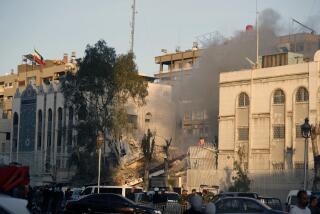Palmyra: Islamic State seeks to obliterate vestiges of ancient civilizations
There seems to be no limit to the cruelty of the marauders who call themselves Islamic State (ISIS). Beheadings, crucifixions, mass slaughter, rape, enslavement; these fanatics are like an unleashed death cult conceived in the scariest Hollywood horror movie — except these monsters are real.
Human history overflows with examples of the brutality some men are willing to commit against their fellow humans. The most odious killers, though, are those driven by an ideology that demands not just the death of innocent people, but that insists that those people’s stories, their art, their culture, their beliefs must also be obliterated. The strange cabal of religious zealots, adventurers, idealistic fools and social misfits that fill the ranks of ISIS have been brought together by just such an ideology.
Their atrocities against human beings rank with the worst in history, but ISIS is taking it even further by trying to destroy history itself. Driven by a malignant form of Islam that demands destruction of all vestiges of non-Muslim civilizations, they are wreaking havoc in a region of the world rich with treasures from humanity’s ancient past. The Nazis who stole the artistic masterpieces of Europe at least understood their value. ISIS has no such comprehension.
As ISIS fighters have carved their way across Syria and Iraq, they have carried out a giddy campaign of destruction. According to the United Nations, close to 200 historic properties have been damaged, some destroyed. The six UNESCO World Heritage sites in Syria are all under threat. Syria’s National Museum of Aleppo and Iraq’s National Museum in Mosul have been hit hard by militants intent on destroying “pagan” artifacts. Two well-preserved Crusaders’ castles have been wrecked. In Nimrud, ISIS vandals plowed into an Assyrian palace with bulldozers. Even ancient mosques in Aleppo and Bosra in Syria have suffered at the hands of the so-called Islamic State.
Now, the civilized world holds its breath as an ISIS army rolls into Palmyra. There, on an oasis in the Syrian desert, stand the glorious ruins of what archeologists and historians describe as one of the most significant cultural centers of antiquity. Palmyra was a major stop along a caravan route that linked the Romans and Greeks with Persia, India and China. Photographs of the place show magnificent columns rising from the sand, watched over by a fortress on a hill.
Palmyra has seen many invaders pass through, but what is left of the city may not survive the onslaught of ISIS.
More to Read
A cure for the common opinion
Get thought-provoking perspectives with our weekly newsletter.
You may occasionally receive promotional content from the Los Angeles Times.






